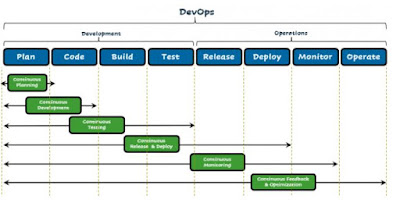DevOps is a culture where collaboration between development, operations, and business teams is considered a critical aspect of the DevOps journey. It’s not solely about the tools and DevOps in an organization creates continuous value for customers. Tools are only one of the pillars, the other being People and Processes.
DevOps increases organizations’ capability to deliver high-quality solutions at a swift pace. It automates all processes starting from build to deployment of an application or a product. This paper will provide a comprehensive understanding to apply DevOps methods, tools, and frameworks in their Organization’s DevOps journey.
Instead of releasing a large number of application features, companies are trying to see if a small number of features can be rolled-out to their customers through a series of release iterations. This has several advantages like better quality of software, quick feedback from customers, etc. which in turn ensures high customer satisfaction. To achieve these objectives, companies are required to:
- The lower failure rate for new releases
- Increase deployment frequency
- Quicker mean time to recovery in the event of a new release crashing the application
- Shortened lead time between fixes
DevOps fulfills all these objectives and helps in achieving seamless delivery. Organizations like Microsoft, Google, Etsy, Facebook, Netflix and Amazon have adopted DevOps to achieve levels of performance that were unthinkable even a few years ago. They are doing tens, hundreds, or even thousands of deployments per day while delivering world-class reliability, stability, and security.
DevOps is a process framework that ensures collaboration between Development and Operations Team to deploy code to production environment faster in a repeatable and automated way. The word DevOps is an amalgamation of two words development and operations. DevOps helps to increases the speed to deliver applications and services faster. It allows organizations to serve their customers efficiently and become more competitive in the market. In simple terms, DevOps can be defined as an alignment between development and IT operations with better communication and collaboration.
- Earlier to DevOps, the development and operation team worked in total isolation.
- Testing and Deployment were isolated phases and were done after design and build. Hence they required more time than actual build cycles.
- Without DevOps, team members are spending a large amount of their time in testing, deploying, and designing instead of focusing on the core part that is creating business services.
- Manual code deployment will lead to errors in production
- Development & Operation teams have a separate-timelines and are not in sync, causing additional delays
DevOps Life-Cycle
- Continuous Planning
- Collaborative Development
- Continuous Testing
- Continuous Release & Deployment
- Continuous Monitoring
- Continuous Feedback and Optimization
Pictures says a lot

No comments:
Post a Comment